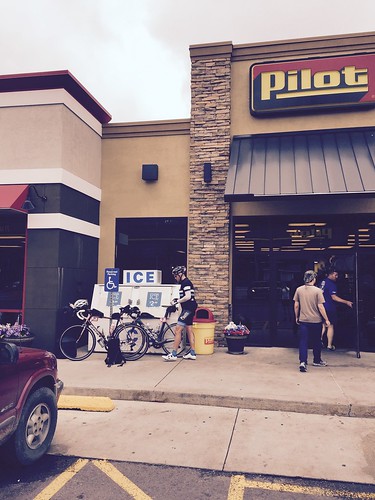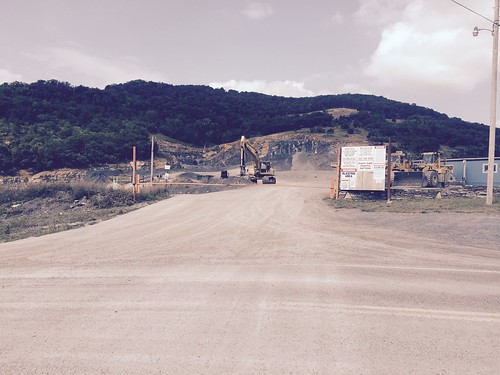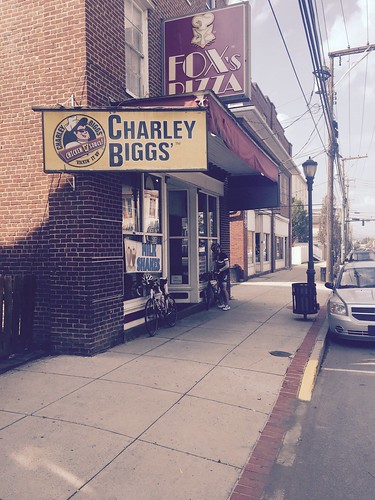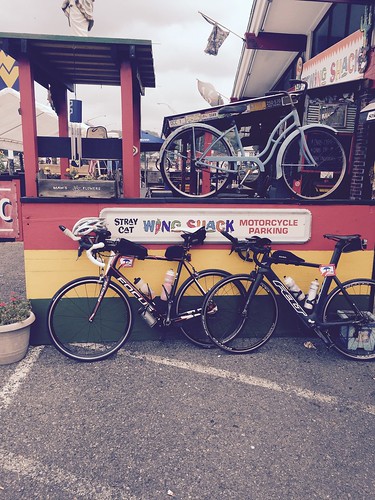 |
| No, not Sauvage. |
Savage.
 |
| Some guy climbs the 30% Westernport Wall on Big Savage Mountain in the Savageman Triathlon. Perhaps the only epic climb in the region we did not face last weekend. Credit enduranceracingmagazine.com. |
Damon had the grand idea that we end Summer 2015 by accepting Bill Beck's open challenge to ride his newly certified "Super Randonneur 600" comprised of an out-and-back stretch from Hancock, Maryland, west through Cumberland and Frostburg before bending south at Grantsville and into Westernport, Maryland. At Westernsport the route enters West Virginia, where riders spend most of their time. Keyser, Moorefield, Lost River, and the George Washington National Forest, crossing into Virginia at Wolf Gap for a final 15 miles to Woodstock.
Here is a map of the route. As an out-and-back, riders traverse the route twice.
 |
| From the ride web page at http://dcrand.org/dcr/SR600/01/index.html. |
What is a "SR 600"? Here's Bill Beck's explanation:
"I'm happy to report that the ACP approved my Big Savage Super Randonnee 600K, so it is now another option for those who would like to tackle one of these challenging rides. Super Randonnées are a new category of rides organized by Audax Club Parisien (ACP). They are mountainous permanents of 600 km (373 miles) with over 10,000 m (32,800 ft) of elevation gain."
Thus, the route imposes whatever challenges one encounters on a 600K,
which I've blogged here before, added to whatever challenges one encounters climbing Mt. McKinley twice. Minus the glacier travel, I suppose. In exchange for the additional challenge, the kind folks at Audax Club Parisien grant an additional 10 hours over the normal 40-hour limit for a 600K.
I agreed to Damon's plan because he had made it and who was I to interfere: we would start from Hancock, Maryland, at 5 am on Saturday of Labor Day weekend; overnight at the ride's southern terminus in Woodstock; sleep well; and return 300K on Sunday. We eschewed any overt goals, although in the back of my mind I thought riding this in normal 600K time -- 40 hours -- might be a nice victory. I kept that one to myself, however.
Borrowed from
the ride web page, the below elevation plot shows the major climbs and locations of the major towns.
 |
| Thanks to Bill for the helpful geographic names on the profile. (http://dcrand.org/dcr/SR600/01/index.html) |
The plot tells two stories. One, this route is not one where you ascend a ridge and stay there for a while before going back down. What makes the Big Savage 600K so downright
savage is that after each climb you are treated to a marvelous descent back nearly to sea level, from where you start the next climb all over again. But two, there are as many marvelous descents as there are ferocious climbs. Some of those, like the return back down South Branch Mountain into Moorefield, are epic in proportion, the kind of descents that in a just world should spawn ballads and cause princesses to swoon.
Otherwise put, two things keep me going while riding in the mountains: (1) the promise of bragging rights if I finish this doggone ride and (2) the prospect of the other side of the mountain. This ride has both.
The start was wet and foggy and even chilly and the batteries on my DiNotte light were weak, leaving me with a lame glow from the ancient Opticube lighting my way. Thankfully the pavement was marvelous and cars were nonexistent for 35 miles to Cumberland. I've always wanted to ride the "National Highway" -- US 40 and, where the US highway coincides with the Interstate, its alternative routes -- and that weekend we did it for 60 miles each way. The huge upside is that the road runs halfway between two interstates, 70 and 68, along that stretch. Those highways take all the trucks and most of the cars, leaving US40 (and Highway 144 in stretches) to us cyclists.
 |
| Wrong season, but this is indeed about what it looks like. Including the lack of traffic. |
And the hills started right away. I dared to inspect the elevation report on the Garmin head-unit at mile 60 in Grantsville. 60 miles, 7000 feet of climbing, all before breakfast. Oy vey.
 |
| Grantsville, MD. Controls were not all pretty, but -- I must say -- very serviceable. Very. |
We were rewarded on the second leg with a marvelous spin on perfect pavement on a false flat (downhill) along the side of Big Savage Mountain, before ascending the hill a second time.
Appalachian mountains form in long, unbroken ridges, rather than singular peaks like one sees in the west. From above the range looks like a set of waves piling up before breaking on the shore. So a mountain like Big Savage will be narrow east to west but many miles long north to south, and the northwest vertex of the route map at Grantsville comes on the west flank. By heading back toward the southeast, one must re-ascend the hill before descending into Westernport. So climb we did.
And then descend. But this one was not pretty: according to an old race report from the infamous Savageman Triathlon:
"
Then
the fun began. The next 3/4 (?) mile or so seemed to go straight up
and it seems they just laid down a new chip-seal road so there was a lot
of loose gravel that made getting out of the saddle next to impossible." (http://forum.slowtwitch.com/forum/Slowtwitch_Forums_C1/Triathlon_Forum_F1/SavageMan_Course_Review_-_HTFU!!!_P1966276/)
Well, on this day we were going down that part, and it had not changed since this report from 2008. I was in the mood to let things go and in return I once rolled right off the side of the road, necessary to avoid the alternative of a skidding fall.
Keyser WV was next. It hadn't been far from Grantsville, so we spent little time here -- and that was standing next to a CVS cramming down potato chips. Moorefield was 40 miles distant, more downhill than up. But what a 40 miles it nonetheless turned out to be. The coup de grace was a summiting of Patterson Creek Mountain, the summit of which is lower than nature intended due to mountaintop removal coal mining.
 |
| If ever there was proof of the failing of sacrificing long-term resources for short term gains, this is it. Teddy Roosevelt, wherefore art thou? |
I'm not accustomed to the Mr. Roboto climbing of right-arm-jerk-left-leg-stomp-pant-left-arm-jerk-right-leg-stomp-pant-do-it-again in Randonneur events. Revise that: before last weekend I was not familiar. Now I am. Partly it was my fault, as I showed up with decidedly un-touring-friendly 39-28 gearing. (It was nearly worse. Before leaving home Saturday morning for the start, I switched wheels, removing the 12-25 cassette originally on the bike. Now that would have been a disaster.) Patterson Creek Mountain was steep. And hard. I hoped upon hope that this was the "hardest climb on the ride" that we had been warned about, and that we were under an erroneous impression as to its placement.
Down Patterson Creek and roll comfortably into Moorefield along the North Fork of the South Branch of the Potomac River. That last five miles is a lovely stretch of highway. And Moorefield is a cute town for West Virginia. Almost weekend-home kind of cute. The control was at Fox's Pizza, a West Virginia chain that is an institution -- despite the universally held, and accurate, view that Fox's may be the worst pizza available, including those you can get in the freezer at Walmart. I have replenished after more than one paddling or climbing adventure in a Fox's in one WV town or another.
 |
| Fox's Pizza in Moorefield. |
|
But beat as we were, stopping here was a treat. We had covered 127 miles and 14000' of climbing in about 11 hours. I noticed, according to one bank clock, that the Moorefield temperature was 94 degrees, a drastic change from our chilly foggy morning.
South Branch Mountain: I had hoped Patterson Creek Mountain was the real bear and we had misunderstood its location relative to the Moorefield control. Damon corrected my misimpression. He was right.
South Branch Mountain lies between Moorefield and the magical Lost River Valley. It is a 2000 foot climb that takes about 4 miles. 500 feet per mile -- that's a 10% grade. Tough, even painful, but possible. Right?
Turns out the first two miles were easy. That left maybe 1500 feet for the remaining two miles. How do you like them apples?
We climbed. We shared gallows humor about what was coming. I once naively said "this isn't that bad. Maybe Bill was just tired." I then found myself alone and metaphorically descending into a dark pit. When I rounded a switchback at my rope's end and saw the next switchback was worse, I walked. Not far -- maybe 100 yards -- but enough to round that next, horrific pitch, and remount for the final and thankfully more gradual push to the summit.
South Branch Mountain may be the single hardest climb I have done in my cycling career. It is the hardest on the east coast by a mile, and if a western climb beats it -- perhaps Grand Mesa in Colorado -- it is through sheer size and elevation. But for all that, the climb up South Branch Mountain through Lost River State Park is a lovely road. Just marvelous. I suffered dearly and yet I want to go back, and soon.
And the backside lets you into the magical Lost River Valley, a little-known gem far from the nearest highway and abutting the George Washington National Forest. Twilight found us as we spun over rolling hills for 20 miles or so into the Lost River Grill. The grill is my all-time favorite cycling rest stop.
 |
| The grill. Friendly, affordable, cozy, and incomparably located. Go here. |
We ate, we drank, I passed on the beer that I dearly wanted, and we rested for the final 30 miles to Woodstock. That stretch took us through the George Washington National Forest. If there is nicer cycling in the mid-Atlantic than the GW Forest, I do not know it. And I can't describe for you the incredible proximity of the night sky. Go see it for yourself!
 |
| The forest follows the VA-WV border for much of its north-south stretch. |
Before you are aware of what you've done you see "Stone's Throw Road" on the right and then the simple sign advertising "Virginia." That means the ridge-top and a 15-mile cruise downhill and horizontally into Woodstock. Which is an awful oversized Interstate 81 rest-stop with a quite nice Holiday Inn Express hotel.
I was tempted not to set the alarm, but we did. And in a rare experience on a multi-day ride, I slept like a baby from 11:30 pm until 6 am. We were on the road at 7 am sharp, back over Wolf Gap an hour later. The second time through the GW Forest, with a little more energy in the legs, we could fully appreciate the perfection of new tarmac, false-flat downhill, and dry mid-60-degree air. Valhalla for Randonneurs must be a fall morning riding west from Wolf Gap in the GW Forest.
 |
| Wrong season, right road. Ignore the arrow. From Hikingupward.com. Unlike in this picture, the pavement is brand new this summer. |
On the second pass through Lost River I broke fast on apple pie and coffee with plenty of sugar and cream, Damon opting for the red velvet cake. (In general, coffee should be consumed black. But SR600s are best accomplished with ample caffeine, sugar, and fat. One must make accommodations.) We departed the grill at 9:30 am with South Branch Mountain and Moorefield our target.
The climb from the southeast was uneventful. The run along the ridge of the mountain was a treat including, among other things, a hearty wave from a retired couple enjoying the morning on their porch with a view over the valley. And the descent, well, I felt like I was on skis.
We started fast, dropping over the rounded shoulder of the ridge. Somewhere I passed Damon before entering impossibly steep switch-backs that had me out of the saddle for control and feathering the brakes to keep them cool. A black bear tumbled across the road not 20 yards on front of me. Had it been closer we would have tumbled together, as I was not stopping that short without taking flight. There were no cars. Thankfully Bill had provided warning of the gravelly switch-back to the right, the same one I walked in a moment of utter despair the prior afternoon. Good curvy descents have you shifting weight fore and rear, keeping it where the bike bites into the turn, like riding the edge of a giant-slalom ski as it bites into corduroy on a steep groomed trail. Shades of a long Copper Mountain cruiser run I remember from 27 years ago.
As the grade relaxed, the road straightened out, until I was on a gently waving series of long-radius banked s-turns on the lower stretches of the mountain. I was afraid of deer, but I was not willing to use the brakes. For two miles in maybe 3 minutes I just plotted my move if a careless
odocoileus virginianus saw fit to cross my path at an inopportune time. One did not.
Damon and I rejoined when the mountain road ended and we cruised into Moorefield with two-thirds of the ride in the bag.
 |
| Fox's, take two. Too tired to worry about a little fog in the lens. |
There comes a point in every ride when you know you will finish, barring catastrophe, but you also become aware of just how unpleasant that will be to accomplish. Moorefield take two was that time for me. 127 miles -- a mere 200K -- is well in my wheelhouse. This is where I started day two of my first two 600Ks (in Alaska). And the road ahead, while known to be hard, was at least a known quantity. All over but the shouting, I thought, but my goodness, what a shout it turned out to be.
The hardest stretch was from Moorefield to Keyser and Keyser to Grantsville. The pavement quality deteriorated; two hills to climb included 20%-plus grades; the sun was shining brightly; and we had 1500' fewer feet to descend than the maybe 7500' we had to climb. Climbing became lowest-gear standing jerks; I spent more time in single-digit miles-per-hour than I care to confess. The highlight was a massive bacon-cheeseburger at the Stray Cat Wing Shack in Keyser, supplemented with fries, chips-and-salsa, a salad, and well over a gallon of coca cola.
 |
| The Stray Cat Wing Shack in Keyser. As much of a biker hangout as it looks. Most bikes there do not look like ours. |
From Grantsville, riding due east toward Hancock with 60 miles remaining, Damon looked like a horse in view of the barn. I lost sight of him on most climbs and most descents. Damon is always a formidable climber, and at night-time, Damon's superior lighting system allows him to reverse our usual order of descending.
In contrast, I found myself forgetting the "pull up on the left leg" mantra that helps me keep the power up on a normal ride. I had precisely the strength to get the legs to the top of the pedal stroke and to let gravity carry them back to the bottom. Thankfully my Garmin head-unit got lost on the drive home. It is nearly certain that my finishing power output in watts dropped out of the triple-digits.
The road was as marvelous going east as it had been going west. Once again the busy Interstate running parallel pulled off all but the rare car. But for one troglodyte just west of Cumberland who aimed a full big-gulp at Damon out of the window of a Jeep Wrangler, we had no unpleasantness with cars. And when we got out of the towns the sky opened back up with intense views of the stars above.
Like all rides of any length the last [X] miles are sheer torture. X is a variable figure, but it is something like 10*y with y being the number of 200Ks being attempted. In this case, we were happy at the Sheetz in Cumberland, 35 miles from the end. Climbing Town Hill 10 miles later was not fun, but it was not terrible. My recollections from there on -- with 25 miles to go -- are increasingly bleak. I do know that bushes started to charge at me and insects crossing the road grew to inches in length. I also know that descending became torture and the prospect of ascending brought tears to my eyes. Sideling Hill, the last substantial climb, was at an 8% grade as torturous as the 15% average grade on the hard part of South Branch Mountain.
But like all rides the end eventually came. Here is the bike in Hancock.
 |
| At the end. |
And I was back in the car and headed home thirty minutes after midnight on the third day. The round trip took us 43.5 hours from start to finish.
There's enough text above that a summary is hardly needed. This ride was long, this ride was hard, this ride was beautiful. Most of all this ride was an accomplishment. I'm glad we did it. I'd even consider doing it again. On the other hand, there are lots of other windmills to chase and dragons to slay.


























